#magdalena river colombia
Explore tagged Tumblr posts
Text

Colombia Travel Adventure
Experience the ultimate Colombia travel adventure with a Savvy Travelers cruise!
#colombia river cruises#colombia river cruise#magdalena river cruise#magdalena river colombia#colombia cruise itineraries#colombia culture tour#colombian music experience#gabriel garcía márquez tour#colombian carnaval celebration#colombian cuisine cruise#colombian coffee tasting#luxury colombia cruise#colombia cruise 2025#colombia travel 2025#colombia cruise booking#best colombia cruises#colombia sightseeing cruise#colombia luxury travel#colombia heritage cruise#colombian cultural immersion#colombia travel itinerary#colombia historical tour#colombia vacation 2025#colombia cruise deals#colombia travel advisor#colombia vibrant heartland#colombia river adventure#colombia travel adventure#colombian river cruise packages#colombia river odyssey
0 notes
Text
New video of Shakira with her family at the Magdalena River in Barranquilla, Colombia. (21 Jun, 2024)
#shakira#shakira mebarak#celebs#celebrities#magdalena river#barranquilla#colombia#new video#video#june 2024
12 notes
·
View notes
Text

alejandro obregón. ganado ahogándose en el río magdalena, 1955. (cow drowning in the magdalena river)
#Alejandro Obregón#río Magdalena#magdalena river#nicolas jaar#ecological crisis#gabriel garcia marquez#colombia
2 notes
·
View notes
Text
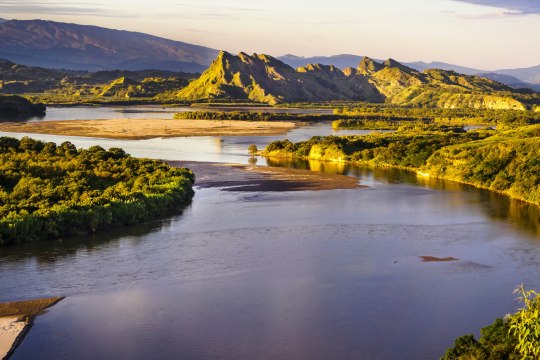

Magdalena River, San Agustín, Huila, Colombia
Alexander Schimmeck
4 notes
·
View notes
Photo

The Canal Del Dique connects the Magdalena River to the Caribbean Sea near Cartagena, Colombia.
7 notes
·
View notes
Text


Magdalena River Turtle (Podocnemis lewyana), family Podocnemididae, Colombia
CRITICALLY ENDANGERED.
photographs via: Turtle Survival Alliance
388 notes
·
View notes
Text
Excerpt from this story from The Revelator:
Imagine a vast agricultural field, endless rows of soy or corn running for acres in every direction. Now imagine that this field grows where a mighty forest once stood. The forest, long since chopped down by human hands and machines, now exists in just a handful of pockets, a few spots here and there where the original trees — and their inhabitants — still live.
It shouldn’t be a hard image to visualize. We’ve all seen it: the lonely patches of forest, grassland or other natural systems squeezed between farmland, buildings or highways.
These pockets of undeveloped land may be small, but for many wild plants or animals, they’re all that remains. Those often-endangered species depend on fragmented habitats for their continued survival.
But although the sites serve as vital refuges for wildlife, fragmented habitat comes with a cost — sometimes many costs — and species carry those burdens unevenly.
To understand how habitat fragmentation affects wildlife, I often think of a study I first covered in 2016 about three monkey species — the white-fronted capuchin (Cebus albifrons), the Venezuelan red howler (Alouatta seniculus), and the critically endangered brown spider monkey (Ateles hybridus). All three live in Colombia’s Magdalena Valley, where they’ve been forced to adapt to life in and around massive cattle ranches.
During the study researchers visited 10 forest fragments that had become isolated from each other by the cattle pastures, the San Juan River and natural savanna. They studied each area for signs of the three monkeys and the health of the forest itself.
In the process they developed three case studies about the ways species adapt — or fail to adapt — to habitat fragmentation. They also provided insight into how other animals might fare in similar situations.
7 notes
·
View notes
Text
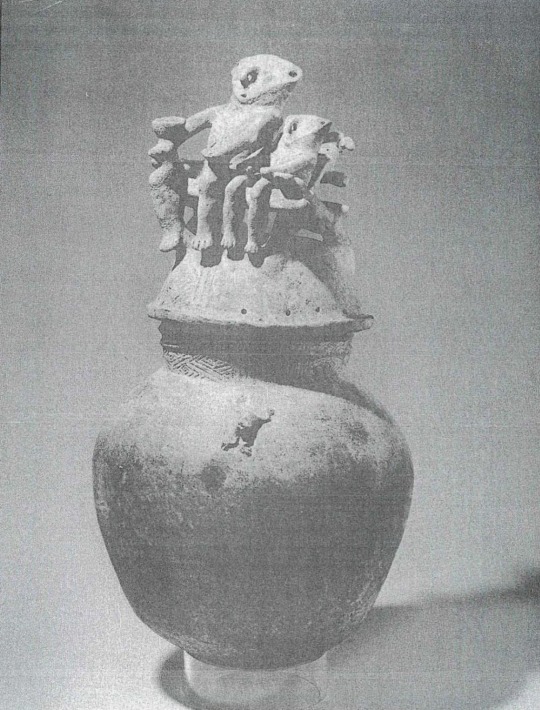
“burial urn with family on lid, circa A.D. 1200, from the lower Magdalena River Valley, Colombia. Gift of Estelle Wolf to the Denver Art Museum, Smooker Memorial.”
From: “South American Explorer No.30” by SAEC; 1991-11.
9 notes
·
View notes
Text

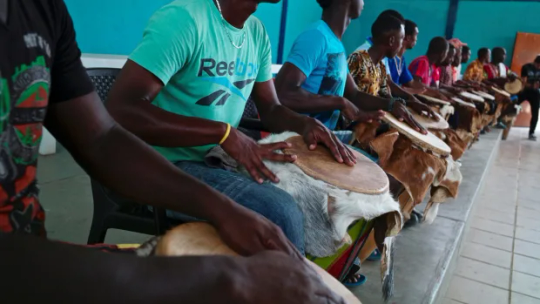
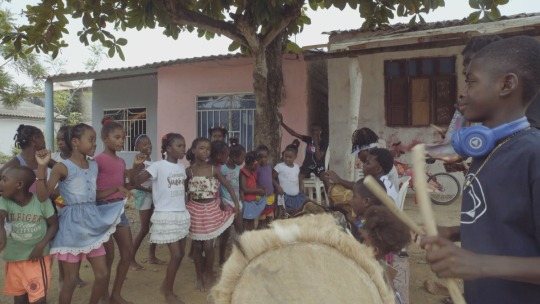
San Basilio de Palenque or Palenque de San Basilio, often referred to by the locals simply as Palenke, is a Palenque village and corregimiento in the Municipality of Mahates, Bolivar in northern Colombia. Palenque was the first free African town in the Americas, and in 2005 was declared a Masterpiece of the Oral and Intangible Heritage of Humanity by UNESCO
Spaniards introduced enslaved Africans in South America through the Magdalena River Valley. Its mouth is close to the important port of Cartagena de Indias where ships full of Africans arrived. Some Africans escaped and set up Palenque de San Basilio, a town close to Cartagena. This community began in 1619, when Domingo Biohó led a group of about 30 runaways into the forests, and defeated attempts to subdue them. Biohó declared himself King Benkos, and his palenque of San Basilio attracted large numbers of runaways to join his community. His Maroons defeated the first expedition sent against them, killing their leader Juan Gómez. The Spanish arrived at terms with Biohó, but later they captured him, accused him of plotting against the Spanish, and had him hanged.
They tried to free all enslaved Africans arriving at Cartagena and were quite successful. Therefore, the Spanish Crown issued a Royal Decree (1691), guaranteeing freedom to the Palenque de San Basilio Africans if they stopped welcoming new escapees. But runaways continued to escape to freedom in San Basilio. In 1696, the colonial authorities subdued another rebellion there, and between 1713-7. Eventually, the Spanish agreed to peace terms with the palenque of San Basilio, and in 1772, this community of maroons was included within the Mahates district, as long they no longer accepted any further runaways
The village of Palenque de San Basilio has a population of about 3,500 inhabitants and is located in the foothills of the Montes de María, southeast of the regional capital, Cartagena. The word "palenque" means "walled city" and the Palenque de San Basilio is only one of many walled communities that were founded by escaped slaves as a refuge in the seventeenth century. Of the many palenques of escaped enslaved Africans that existed previously San Basilio is the only one that survives.Many of the oral and musical traditions have roots in Palenque's African past. Africans were dispatched to Spanish America under the asiento system.
The village of San Basilio is inhabited mainly by Afro-Colombians which are direct descendants of enslaved Africans brought by the Europeans during the Colonization of the Americas and have preserved their ancestral traditions and have developed also their own language; Palenquero. In 2005 the Palenque de San Basilio village was proclaimed Masterpiece of the Oral and Intangible Heritage of Humanity by UNESCO.
In the village of Palenque de San Basilio most of its inhabitants are African and still preserve customs and language from their African ancestors. In recent years people of indigenous ancestry have settled at the borders of Palenque, being displaced earlier by the Colombian civil war. The village was established by Benkos Bioho sometime in the 16th century.
One of the first anthropological studies of the inhabitants of Palenque de San Basilio was published by anthropologist Nina de Friedemann and photographer Richard Cross in 1979 entitled Ma Ngombe: guerreros y ganaderos en Palenque.
A Spanish-based creole language known as Palenquero originates in this community. The New York Times reported on October 18, 2007 that the language spoken in Palenque is thought to be the only Spanish-based creole language spoken in Latin America. Being a creole language, its grammar differs substantially from Spanish making the language unintelligible to Spanish speakers. Palenquero was influenced by the Kikongo language of Congo and Angola, and also by Portuguese, the language of the slave traders who brought enslaved Africans to South America in the 17th century. Exact information on the different roots of Palenquero is still lacking, and there are different theories of its origin. In 2007, fewer than half of the community's 3,000 residents still speak Palenquero.
A linguist born in Palenquero is compiling a lexicon for the language and others are assembling a dictionary of Palenquero. The defenders of Palenquero continue working to keep the language alive
#san basilio#palenquero#african#kemetic dreams#afrakan#brownskin#afrakans#africans#brown skin#south america#spanish#colombian#kikongo#congo#angola#latin america
13 notes
·
View notes
Text
Colombia is to cull some of the 166 hippos descended from a herd owned by drug lord Pablo Escobar in the 1980s.
Environment Minister Susana Muhamad said that 20 would be sterilised, others would be transferred abroad - and "some" would be euthanised.
Experts have for years tried to control the hippo numbers.
Escobar imported the animals for his private zoo at Hacienda Nápoles. They were left to roam after he was killed in a shootout with police in 1993.
Authorities have tried various approaches to curb the population explosion in Colombia's main river, the Magdalena, including sterilisation and transferring individuals to zoos abroad.
Efforts failed to contain the herd's growth, however, with a lack of predators and the fertile and swampy Antioquia region providing perfect conditions for the native African animal to thrive.
Their fate was sealed when hippos were declared an invasive species last year, opening the door to a cull.
"We are working on the protocol for the export of the animals," Ms Muhamad was quoted as saying by local media.
"We are not going to export a single animal if there is no authorisation from the environmental authority of the other country."
She said the ministry was creating a protocol for euthanasia as a last resort.
Colombian experts have long warned that the hippos' uncontrolled reproduction poses a threat to humans and native wildlife.
Estimates suggest that the population could reach 1,000 by 2035 if nothing is done, but animal activists say sterilization entails suffering for the animals - and great danger for the vets doing it.
The hippo is one of the largest land animals, with adult males weighing up to three tonnes. They are also among the most dangerous, killing around 500 people a year.
Fishing communities along the Magdalena River have come under attack and some hippos invaded a school yard, although no one has been killed.
Escobar was the head of the Medellín cartel and dubbed the "cocaine king" who amassed an estimated $30bn (£25bn) fortune smuggling drugs into Miami and the southern United States.
His reign of terror spanned more than a decade and involved kidnappings, hundreds of murders, bribery, bombings and turf wars with rival drug barons - as well as a brief sojourn as an elected politician.
As one of the most-wanted men on the planet, he gave himself up to Colombian authorities in 1991 on agreement that he would spend five years in a prison he had built, known as La Catedral.
Escobar went on the run a year later amid government attempts to move him to a more secure jail.
With a $2m US bounty on his head, he met his end in his home town of Rionegro - he was shot dead on a rooftop on 2 December 1993 as he tried to evade police.
He left a legacy of violence but also the 5,500-acre Hacienda Nápoles, private citadel in Antioquia containing, among other things, a menagerie of four hippos, plus giraffes, camels and zebras.
The hacienda was given over to poor locals by the government after Escobar's death, and the hippos were left to roam free as they were deemed too difficult to seize.
3 notes
·
View notes
Text
Colombia Cruise 2025

Discover Colombia's Vibrant Heartland: A River Cruise Odyssey
Embark on the journey of a lifetime through the “Land of a Thousand Rhythms” and join Savvy Travelers in 2025 as we become the first major river cruise line to explore Colombia along its magnificent Magdalena River. Be among the first to sail our two brand-new 7-night itineraries between Cartagena and Barranquilla – now accepting reservations!
Why Cruise Colombia?
Brimming with Life and Color: Colombia has become a popular destination for travelers looking to immerse themselves in South America's vibrant culture and deeply rooted heritage.
Land of a Thousand Rhythms: With an exceptionally diverse population, vibrant cultural traditions and festivals, and more than 1,000 styles of music performed and enjoyed throughout its borders, Colombia is considered the “Land of a Thousand Rhythms.”
Personality of the Magdalena River: Described by novelist Gabriel García Márquez as the “River of Life,” the Magdalena embraces diversity like no other river, home to approximately 80% of Colombia’s population, a melting pot of Indigenous, European, and African ancestry.
Aboard Two Incredible Ships: Our remarkable newly designed ships, the Savvy Explorer and Savvy Adventurer, offer the luxury of space and ever-changing views of the Colombian landscape for a total of just 60 and 64 guests respectively.
Itineraries: Immerse yourself in the wonders of Colombia as you journey along the magnificent Magdalena River, exploring vibrant cities, historic towns, and breathtaking landscapes.
Enriching Colombian Culture:
Music: Experience Colombia’s celebrated music, from lively cumbia to emotional vallenato, with ample opportunities for live performances featuring regional music.
Literature: Explore the literary legacy of Gabriel García Márquez, one of the greatest writers of the 20th century, and get inspired for your Colombia journey by reading his works.
Carnaval: Get a taste of Colombia’s vibrant culture with an exclusive Carnaval celebration in Barranquilla, boasting the second-largest Carnaval celebration in the world.
Colombian Caribbean Cuisine: Indulge in the finest Colombian cuisine, featuring regional specialties such as Cazuela de Mariscos and arepa de huevo, paired with Colombian chocolate and local rum.
Colombian Coffee: Savor the unique flavors of Colombian coffee, hand-harvested in the Sierra Nevada region, known for its 100% organic beans and exquisite taste.
Book Your Colombian Adventure Today
Book Your Colombian Adventure Today with Savvy Travelers. Immerse yourself in the vibrant culture, rich history, and breathtaking landscapes of Colombia as you journey along the majestic Magdalena River. Don't miss out on this extraordinary opportunity to explore one of South America's most captivating destinations. Contact your preferred travel advisor now and reserve your spot on our unforgettable Colombia River Cruises. Get ready to embark on a lifetime journey and create memories that will last forever with Savvy Travelers!
#colombia river cruises#colombia river cruise#magdalena river cruise#magdalena river colombia#colombia cruise itineraries#colombia culture tour#colombian music experience#gabriel garcía márquez tour#colombian carnaval celebration#colombian cuisine cruise#colombian coffee tasting#luxury colombia cruise#colombia cruise 2025#colombia travel 2025#colombia cruise booking#best colombia cruises#colombia sightseeing cruise#colombia luxury travel#colombia heritage cruise#colombian cultural immersion#colombia travel itinerary#colombia historical tour#colombia vacation 2025#colombia cruise deals#colombia travel advisor#colombia vibrant heartland#colombia river adventure#colombia travel adventure#colombian river cruise packages#colombia river odyssey
0 notes
Text




New photos of Shakira with her family at the Magdalena River in Barranquilla, Colombia. (21 Jun, 2024)
#shakira#shakira mebarak#celebs#celebrities#magdalena river#barranquilla#colombia#new photos#photos#june 2024
12 notes
·
View notes
Text

Río Magdalena, Jesús María Zamora. 1947.
#jesus maria zamora#Magdalena#rio magdalena#magdalena river#ecological crisis#colombia#landscape#climate change
0 notes
Text
Today I went to a place called Bocas De Ceniza, where the river Magdalena, Colombia’s most important river, reaches the Caribbean Sea.
The most interesting thing about this place is that decades ago a canal was built to better direct the river flow into the sea, and to do so a massive breakwater was made, which is now used as a tourist trail to go see the mouth of the river

This is from the tip of said breakwater, on the left you can see the Magdalena river and the city of Barranquilla, where I live, and on the right you have the Caribbean sea and the towns of Salgar and Puerto Colombia.

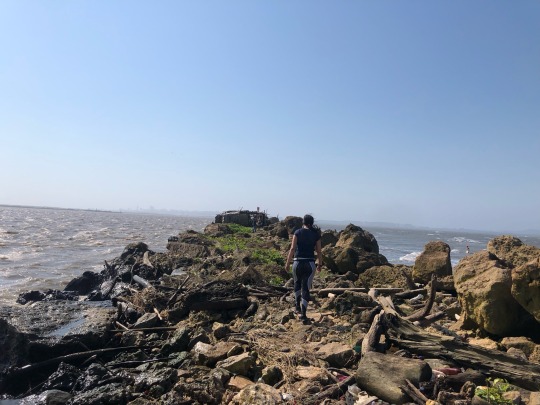
I went there with my girl, first on bike, and once the terrain got too rough, on foot. In total we covered around 15 kilometers or 3 hours.

Man was it fun, but also extremely exhausting!
8 notes
·
View notes
Link
0 notes
Text
Hombre Caiman

In the heart of Colombia, along the winding courses of the Magdalena River, a unique creature haunts the waterways and preys upon the psyche of the local population. The Hombre Caiman—or “Caiman Man”—is neither entirely human nor entirely beast, dwelling in the ambiguous realm between the two. With origins steeped in cautionary storytelling, this mythical figure serves as a chilling reminder that nature, if disrespected, will eventually impose its own brand of justice...
Hombre Caiman
0 notes